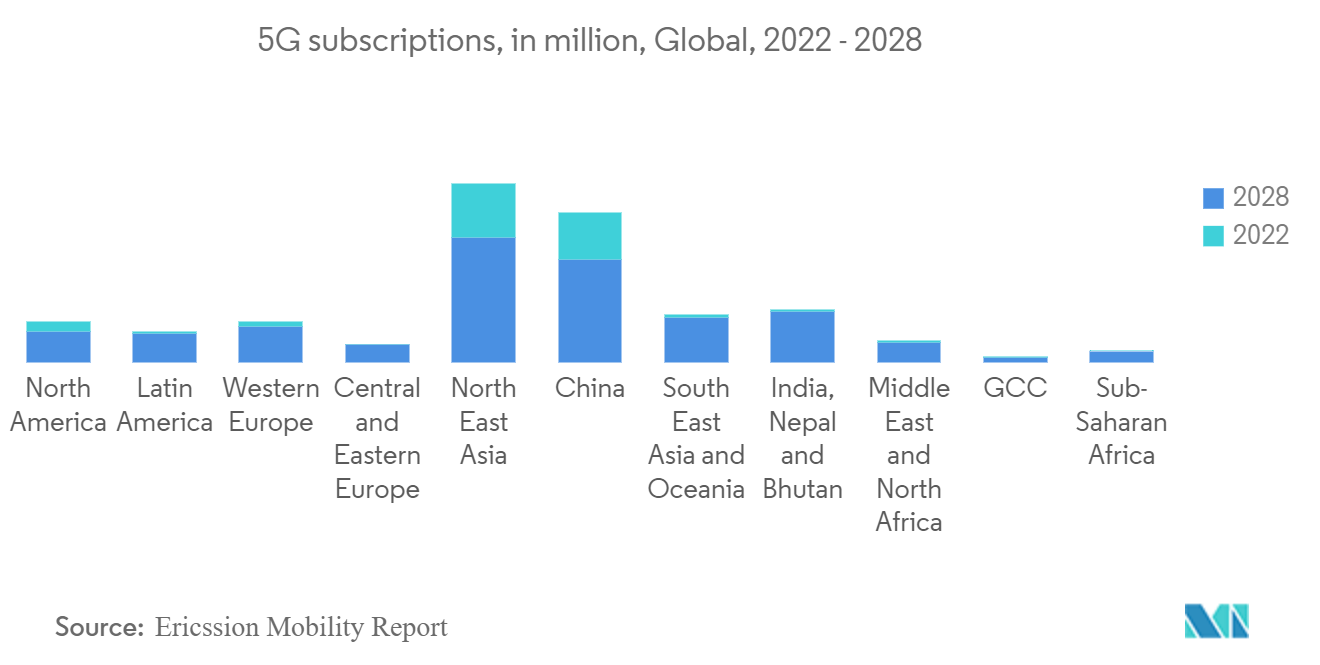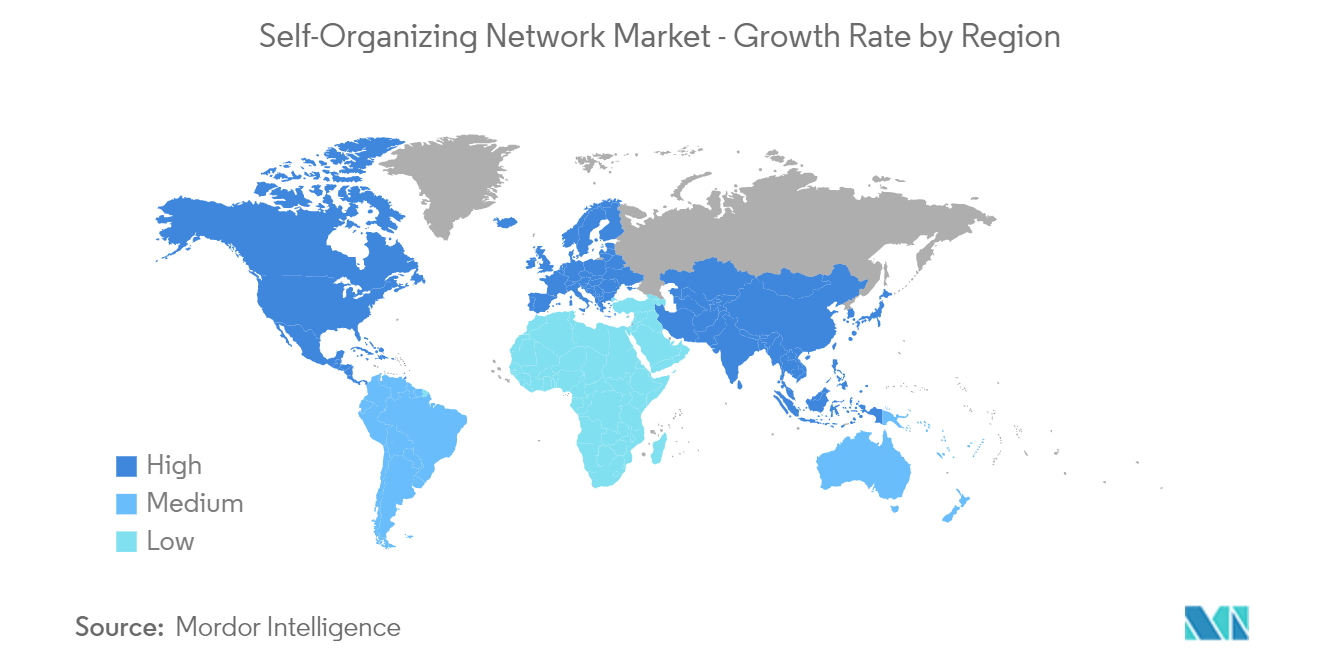Market Trends of Self-Organizing Network Industry
This section covers the major market trends shaping the Self-Organizing Network Market according to our research experts:
Increasing demand for 5G Networks
- The demand for SON software owing to the upcoming 5G and 4G technology growth, is predicted to grow significantly over the next five years. The increasing wireless connection demand and the necessity to handle expanding network complexity with a growing number of tiny phone users are driving the market growth of self-organizing networks (SON).
- Furthermore, key players in the market are focused on investments, acquisitions, and partnerships. These strategies are projected to increase the market growth opportunities. For Instance, Ericsson, in collaboration with BT, announced a second major contract for a European port to deploy a private 4G/5G network in the U.K.'s Port of Tyne.
- For Instance, VMware introduced several updates to its RAN portfolio of products VMware RAN Intelligent Controller (RIC). VMware RIC, along with VMware Telco Cloud Platform RAN, will help service providers smoothly transition to Open RAN. Such Initiatives in the network infrastructure would create new growth opportunities for the self-organizing network market.
- According to Ericsson Mobility Report, by the end of 2028, 5 billion 5G subscriptions are expected to grow globally, and 5G subscription uptake is faster than 4G. Digital payments are growing, and the demand for high-speed connectivity services like 5G will increase significantly.

Asia-Pacifc is Expected to Register Significant Market Growth During the Forecast Period
- Asia-Pacific may witness increasing internet penetration and high mobile data traffic rates owing to the rising number of planned deployments of LTE networks and the upcoming 5G network. The growing investment by foreign players is one factor driving the demand for the Self-Organizing Network Market.
- According to GSMA, Asia-Pacific will have more than 400 million 5G subscriptions by the end of 2025, representing 14% of overall mobile subscriptions in the region, while 4G subscriptions will significantly decline over the next five years.
- The increasing demand for high-speed connectivity services by customers and spending on deploying 5G infrastructure will positively influence the Asia-Pacific self-organizing network market. For Instance, Opticoms partnered with Innovile to manage and optimize the Open RAN private 5G network.
- Key players in the Self-Organizing Network market are expanding their market presence through acquisitions and partnerships. For Instance, Qualcomm acquired Cellwize to enable Open RAN (radio access network) to simplify the deployment and expansion of 5G infrastructure.


